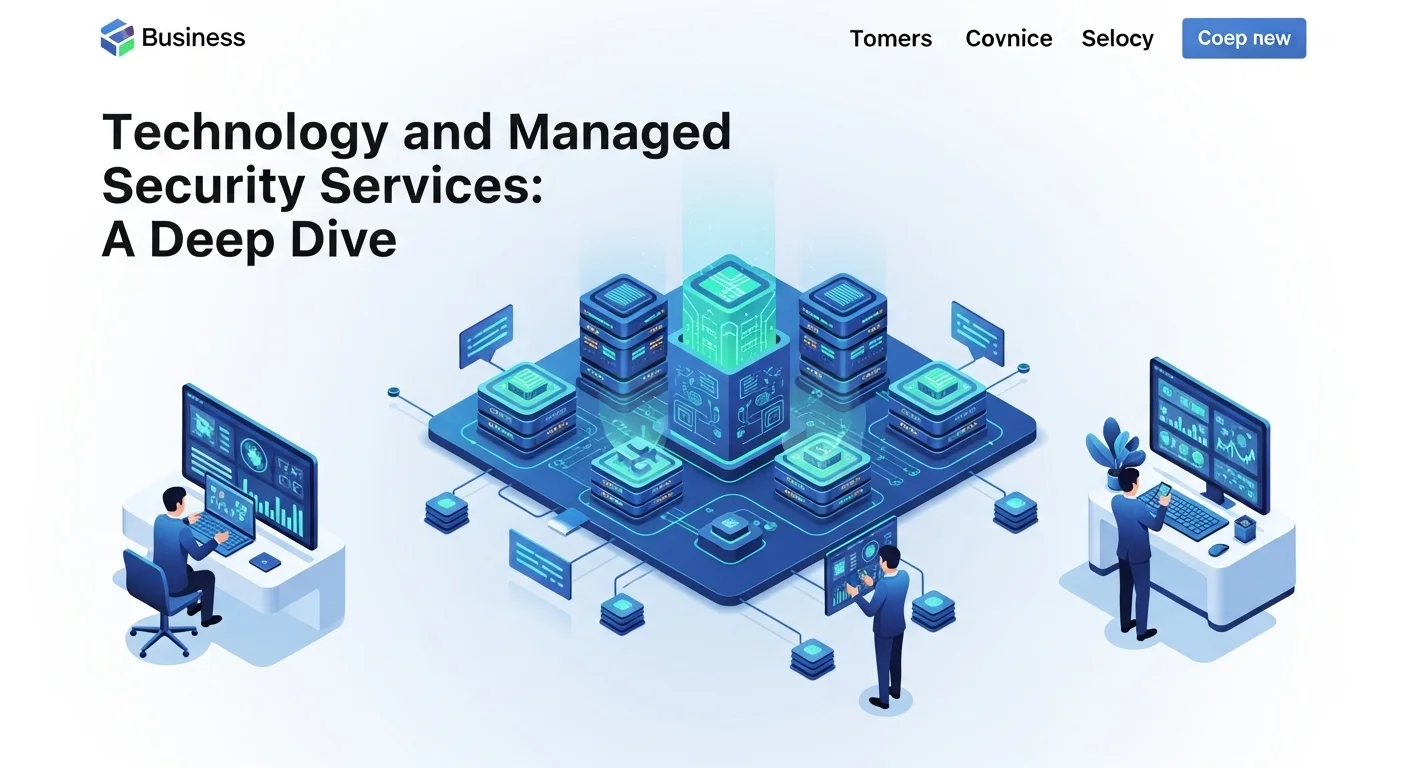My Ultimate Guide to Tech Side Hustles: Ideas That Actually Work in 2025

Executive Summary
In our fast-moving digital world, using your tech skills to earn extra money isn't just a clever trick anymore—it's a smart path to financial growth. I've spent years in the tech space, and I've seen firsthand how a good side hustle can change your life. This article is my personal guide to the most promising tech ventures out there. We'll dive into how things like AI, cybersecurity, and cloud computing are opening up incredible opportunities for part-time gigs and small businesses. Whether you're thinking about building an AI tool, offering freelance security advice, or even just setting up smart homes for people, the possibilities are huge. These aren't just ways to make extra cash; they're your chance to sharpen your skills, grow your network, and turn your passion for technology into a profitable business.
Table of Contents
Table of Contents
- What Exactly Is a 'Tech Side Hustle'?
- The New Wave of Tech Entrepreneurs
- Key Areas for Profitable Tech Ventures
What Exactly Is a 'Tech Side Hustle'?
Let's be real, the word 'hustle' used to have a bit of a gritty feel to it. Today, it’s a badge of honor. It means you're ambitious, you've got that entrepreneurial spark, and you’re driven to build something for yourself. A side hustle is simply anything you do outside your main job to earn extra income. When we apply this to the tech world, we're talking about a massive playground of opportunities for anyone with technical skills. This isn't just about pocket money; it's a completely new way of thinking about work and financial freedom. I remember my first side gig—optimizing a local restaurant's website for a few hundred bucks. It wasn't much, but it was *mine*. That feeling is powerful. Technology has torn down the old barriers to starting a business. With just a laptop and a specific skill, you can build something real. For you, this could be a way to pay off debt, save up for a big goal, or even test the waters for a full-time business. On a bigger scale, this trend is what fuels innovation and creates a more flexible, skilled workforce.
The tech landscape is always changing. Things like Artificial Intelligence (AI), cybersecurity, and the Internet of Things (IoT) aren't just fancy buzzwords; they're the foundations of our new economy, creating a huge need for skilled people. This is where a great side venture comes in. A developer can build a specialized mobile app. A security analyst can help small businesses check for weaknesses. [17] A cloud expert can guide companies in moving their data. These aren't small-time gigs anymore; they're essential parts of the tech world. Platforms like Upwork and Fiverr have made it incredibly easy to connect with clients all over the globe, opening up a worldwide market for your skills. They handle the boring stuff so you can focus on doing the work, which makes starting out so much less intimidating.
The New Wave of Tech Entrepreneurs
The modern side hustler can be anyone. I've met software engineers who build and sell their own code, IT pros who offer remote help on weekends, and tech writers who create amazing blog content for companies. [26] The one thing we all have in common is using technology to create value. A huge reason this is booming is that it costs next to nothing to start. Forget needing a ton of cash for a storefront or inventory. Many tech gigs can be launched with just your computer. For example, starting a tech blog or a YouTube channel costs more in time and effort than in money. The same goes for offering services like social media management or SEO consulting—you can do it all from home.
What's really exciting is how scalable these ventures can be. A freelance developer might start with small coding jobs. As their reputation grows, they can take on bigger projects, maybe hire another freelancer, and eventually build a whole software agency. I've seen it happen many times. The journey from a small side project to a sustainable business is very real. The trick is to start small, prove your idea works, build up a list of happy clients, and then smartly reinvest your earnings. This approach keeps risk low and growth potential high. Just look at the explosion in AI services. People are now using AI for everything from writing content to building custom chatbots for businesses, and companies are lining up to pay for that expertise. [10, 36]
Key Areas for Profitable Tech Ventures
To help you find your place, let's look at the key areas where tech side hustles are really taking off. These fields are packed with opportunities.
1. Software and Web Development
This is the classic, rock-solid area for tech gigs. The need for custom websites, apps, and software never goes away. If you can code, you can find work. I've found that niching down is where the real money is. For instance, becoming an expert in Shopify for e-commerce, a master of WordPress, or even building apps with no-code tools are all fantastic freelance paths. No-code platforms, especially, have opened the door for people who aren't traditional programmers to build and sell their own solutions.
2. AI and Data Science
The AI gold rush is on. Small businesses are desperate to use AI but often don't have the know-how. [14] This creates a huge market for consultants who can help them. You could build custom AI chatbots, offer data analysis services, create AI-generated art, or even become an 'AI prompt engineer'—someone who knows exactly how to talk to AI to get the best results. [10] These gigs are on the cutting edge and can be very profitable.
3. Cybersecurity Services
As we live more of our lives online, the need for solid cybersecurity has gone through the roof. Many small businesses can't afford a full-time security team, which leaves them wide open to attacks. This is a massive opportunity for freelance security pros. Offering services like security check-ups, penetration testing, or even employee training can be a great business. [9, 17] You could focus on a specific area, like cloud security, to stand out even more. The demand is so high that this is one of the most stable freelance paths in tech.
4. Cloud Computing Solutions
Everyone's moving to the cloud. Businesses are shifting their operations to platforms like AWS, Azure, and Google Cloud to save money and improve performance. This move requires special skills. As a cloud consultant, you can help with planning, setup, management, and security. Getting certified in one of these platforms can really boost your credibility and how much you can charge. [43] It's a high-demand field with tons of room to grow.
5. Tech Content and Education
If you're good at explaining complicated tech stuff in a simple way, creating content could be your calling. Starting a tech blog, YouTube channel, or podcast is a great way to build an audience and share your knowledge. [21] You can make money from ads, affiliate marketing (recommending products for a commission), sponsorships, or by selling your own digital products like e-books and online courses. [12] This path takes patience, but it can create a steady stream of passive income over time.
6. Home Automation and IoT
The 'smart home' is no longer a futuristic dream; it's here. [19] People are buying smart thermostats, lights, and security cameras, but they often struggle to set everything up. This has created a demand for home automation experts who can design and install custom smart home systems. [3, 31] It's a hands-on gig that blends tech skills with customer service. You could offer packages for home security, energy savings, or entertainment setups. As more and more devices get connected, this field will only get bigger.

Your Complete Guide to Launching a Tech Side Business
Coming up with an idea is the easy part. Turning it into a real, successful tech hustle takes a solid plan, a good feel for the market, and the right tools. In my experience, success comes from being strategic. This guide will walk you through the practical steps, business techniques, and resources you'll need to turn your skills into a profitable venture. We’ll explore different ways to structure your business and compare the platforms that can help you succeed. Whether you're starting small or dreaming big, this is your roadmap.
Finding Your Path: Services, Products, or Content
The very first decision is how you'll operate. Most tech hustles fall into one of three buckets: offering a service, selling a product, or creating content. Each has its pros and cons.
1. Service-Based Hustles: Selling Your Expertise
This is where most people start, and for good reason. You're essentially trading your skills and time for money. Think freelance web development, cybersecurity consulting, or remote IT support.
- The Technical Side: Your success here depends entirely on your skill. You have to be a true expert. For a developer, that means knowing your code. For a security consultant, it means staying ahead of the latest threats. [17] I spend at least a few hours every week just learning to stay sharp—it's non-negotiable.
- The Business Side: Finding and keeping clients is the name of the game. Start by building a portfolio that shows off what you can do. Use freelance platforms like Upwork or Fiverr to land your first few gigs. [26, 33] I've also found that networking on LinkedIn is incredibly powerful. [8] Figure out your pricing—either by the hour or per project. Great communication and always hitting your deadlines are how you get five-star reviews and repeat customers.
- Helpful Resources: Tools like Trello or Asana are perfect for managing your projects. Slack and Zoom are essential for talking with clients. And for getting paid, something like FreshBooks or QuickBooks Self-Employed will save you a ton of headaches.
2. Product-Based Hustles: Create Once, Sell Forever
A product-based model means you build something once and can sell it over and over. This could be digital, like a mobile app or an e-book, or physical, like a 3D-printed gadget.
- The Technical Side: For digital products, you'll need skills in software development and design. For physical items, you might need 3D modeling or electronics knowledge. The cool thing now is that no-code platforms let people who aren't developers build and sell software, which opens this path up to more people.
- The Business Side: Marketing is your biggest challenge here. You need to know who you're selling to and why they should buy from you. You can sell digital products on your own site using Shopify or Gumroad, or on marketplaces like the App Store. [21] Physical products do well on e-commerce platforms too. [18] You'll need to get good at content marketing and social media to get the word out.
- Helpful Resources: For coding, you'll use tools like VS Code and GitHub. For 3D printing, you'll need a printer and software like Blender. [27, 47] An e-commerce platform like Shopify gives you everything you need to build your own online store.
3. Content-Based Hustles: Build an Audience and Earn from It
This model is all about creating great content—like a blog, YouTube channel, or podcast—to attract an audience that you can then monetize.
- The Technical Side: The tech barrier is lower, but you still need some skills. For a blog, that means understanding SEO and using a platform like WordPress. For video, you'll need to know how to record, edit, and upload to YouTube.
- The Business Side: Consistency is everything. You have to consistently put out high-quality content that people find valuable. Promoting your work on social media is a must. You can make money from ads, affiliate links, sponsorships, or by selling your own products. It’s a long game, but a successful content business can generate incredible passive income.
- Helpful Resources: For a blog, you'll need a domain and hosting (Bluehost is a popular start). [42] For video, your smartphone can be enough to start, along with a decent microphone and free editing software like DaVinci Resolve. For podcasting, a simple USB mic and Audacity will get you going. [21]
A Quick Comparison of Popular Tech Hustle Platforms
Picking the right platform is critical. Here's my take on some of the most popular options.
| Platform | Best For | Pros | Cons |
|---|---|---|---|
| Upwork | All types of freelance services | Huge number of clients, secure payments. | Lots of competition, high fees (up to 20%). |
| Fiverr | Gig-style freelance services | Simple to start, clear pricing, tons of buyers. | Fierce competition, can feel like a race to the bottom on price. |
| Toptal | Top-tier freelance developers & designers | High-paying clients, less competition because they're picky. | Extremely hard to get in (they take the top 3%). |
| Etsy | Creative digital and physical products | Large, ready-made audience of shoppers. | Lots of competition and fees, best for handmade/vintage items. |
| Shopify | Selling your own products | Total control over your brand, powerful tools. | You have to find your own customers, has a monthly fee. |
| YouTube | Video content creation | Massive global audience, many ways to earn. | Very competitive, takes a long time to build and monetize. |
| Substack | Newsletter content creation | Easy to use, direct connection with readers. | You do all the marketing, they take a cut of paid subscriptions. |
Your Launch Plan: From Idea to First Payment
Let's walk through an example. Say you want to start a freelance cybersecurity service for small businesses.
- Find Your Niche: Don't just be a 'cybersecurity guy.' Specialize. How about 'Cybersecurity for E-commerce Stores' or 'Data Protection for Local Law Firms'? This makes you an expert, not a generalist.
- Package Your Services: Create clear offerings. For example:
- Basic Security Audit: A one-time scan and report.
- Managed Security Plan: Monthly monitoring and support.
- Employee Training Workshop: Teach a company's staff how to spot scams.
- Set Your Prices: See what others with your skills are charging. [24, 35] You can charge by the hour or create fixed-price packages. Maybe the Basic Audit is $500, and the monthly plan is $300/month.
- Build Your Brand: Get a professional name and a simple logo. Create a basic website or a polished LinkedIn profile that clearly explains what you do and how people can hire you. [13, 15]
- Get Your Tools: You'll need some security scanning tools (like OWASP ZAP), a project manager (like Trello), and an invoicing tool (like FreshBooks).
- Find Your First Clients: Start with your own network. Tell friends and former colleagues what you're doing. Create a killer profile on Upwork and LinkedIn. You could even offer a discount to your first client in exchange for a great testimonial.
- Deliver Amazing Work & Improve: Once you get a client, blow them away with your service. Ask for feedback and use it to make your offerings even better. As you collect testimonials, you can raise your prices and go after bigger clients.
This step-by-step approach works for almost any tech venture. The key is to move from a vague idea to a concrete plan. When you combine your tech skills with smart business thinking, you can build a side hustle that not only brings in money but also feels incredibly rewarding.

Tips and Strategies for Long-Term Success
Getting your tech side hustle off the ground is one thing, but making it last is another. To really succeed, you need to constantly improve your strategies and use the right tools. I've learned over the years that long-term growth comes from smart habits. Here are my best tips for making your venture thrive.
Best Practices for Sustainable Growth
A successful side business is a marathon, not a sprint. Here's how to build something with real staying power.
- Be a Lifelong Learner: Technology moves incredibly fast. The skill that's hot today could be old news tomorrow. I dedicate time every single week to learning. Follow industry blogs, take online courses on Coursera or Udemy, and get new certifications. [43] In fields like AI and cybersecurity, this isn't optional—it's your biggest competitive advantage.
- Nail Your Niche: I've said it before, but it's that important. Being a jack-of-all-trades makes it hard to stand out. When you specialize, you become the go-to expert. Instead of a 'web developer,' be the 'expert who makes WordPress sites load lightning-fast.' A clear niche makes your marketing easier and lets you charge more.
- Build a Strong Personal Brand: Your reputation is everything. A powerful personal brand builds trust and brings clients to you. Be active on LinkedIn. [8, 13] Share helpful content, join conversations, and show people what you know. Starting a small blog or newsletter is a great way to position yourself as an authority, not just someone for hire.
- Obsess Over Customer Service: Happy clients give you two things: more work and referrals. These are the lifeblood of a service business. Always communicate clearly. Be honest about timelines and costs. I always try to deliver just a little more than I promised. A great client experience is the best marketing you can't buy.
- Manage Your Money Like a Pro: Treat your side hustle like a real business from day one. Open a separate bank account for it. Track every dollar in and out with accounting software. Make sure you set aside money for taxes. Knowing your numbers is the only way to make smart decisions and stay profitable.
My Toolkit: Essential Business and Technology Tools
Using the right tools can make you look more professional and work way more efficiently. Here's a list of tools I swear by.
For Project Management & Productivity:
- Trello/Asana: Great visual boards for keeping track of your projects and tasks.
- Notion: My personal favorite. It's an all-in-one workspace for notes, tasks, and planning.
- Clockify/Toggl: Time-tracking apps. Essential for knowing if you're pricing your projects right.
For Marketing & Finding Clients:
- Canva: An incredibly easy design tool for making professional-looking social media graphics and proposals.
- Mailchimp/ConvertKit: For building an email list and sending out newsletters.
- Buffer/Hootsuite: Tools to schedule your social media posts so you can set it and forget it. [16]
- A Professional Website: This is non-negotiable. Use something like WordPress, Squarespace, or Webflow. Bluehost is a solid, beginner-friendly hosting option. [42]
For Specific Tech Fields:
- For Developers: VS Code (code editor), GitHub (version control), Docker (for packaging apps), Postman (for testing APIs).
- For Cybersecurity Experts: Kali Linux (a whole OS for security testing), Wireshark (for network analysis), Metasploit (exploitation tool), OWASP ZAP (web app scanner).
- For AI Hustlers: Jupyter Notebooks (for data work), TensorFlow/PyTorch (machine learning libraries), OpenAI API (for using models like GPT), Midjourney/DALL-E (for creating images). [10]
- For Content Creators: DaVinci Resolve (free, professional-grade video editor), Audacity (free audio editor), OBS Studio (free for streaming/recording), Ahrefs/SEMrush (for SEO).
Creating Great Experiences and Scaling Your Business
As you grow, your job changes. You'll move from just doing the work to creating amazing client experiences and planning how to scale up. This is how you go from a side gig to a real business.
Improving the Client Experience:
- Smooth Onboarding: Create a professional welcome process for new clients. Send them a welcome packet, schedule a kickoff call, and give them a clear project plan.
- Regular Updates: Keep clients in the loop with progress reports. It builds trust and shows you're on top of things.
- Professional Offboarding: When a project ends, have a clear wrap-up process. Deliver the final files, provide a summary report, and ask for a testimonial. A few weeks later, check in to see how things are going.
Strategies for Scaling:
- Productize Your Service: Turn your common services into fixed-price packages, like a 'Website SEO Audit Package.' This makes them easier to sell and deliver. It's a brilliant way to scale a service business.
- Hire Help: When you have more work than you can handle, it's time to grow your team. Start by subcontracting tasks to other freelancers. Once your income is steady, you can think about hiring someone part-time.
- Create Passive Income: Use your expertise to build products that make money while you sleep. This could be an e-book, an online course, or a software template. It diversifies your income and gives you more freedom.
- Raise Your Prices: As you get more experienced and have a steady flow of clients, don't be afraid to charge what you're worth. Your prices should reflect the value you provide.
If you're serious about building a business in this space, you have to stay informed. One of my go-to resources for industry news and trends is TechCrunch. It's essential for keeping a pulse on the startup world and major tech shifts. [28] Keeping up with resources like this ensures you're always a step ahead.
Ultimately, turning your tech hustle into a success story is about mixing your technical skills with smart business sense. By following these practices, using the right tools, and focusing on delivering real value, you can build a sustainable business that not only boosts your income but makes your professional life more exciting and fulfilling.
Expert Reviews & Testimonials
Sarah Johnson, Business Owner ⭐⭐⭐
The information about tech side hustles is good, but I wish it had more practical examples specifically for business owners like me.
Mike Chen, IT Consultant ⭐⭐⭐⭐
A useful article on tech side hustles. It helped me get a better handle on the topic, though some parts could have been explained a bit more simply.
Emma Davis, Tech Expert ⭐⭐⭐⭐⭐
Excellent article! Super comprehensive guide to tech side ventures. It was a huge help for my own specialization, and I found it perfectly clear.



